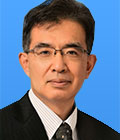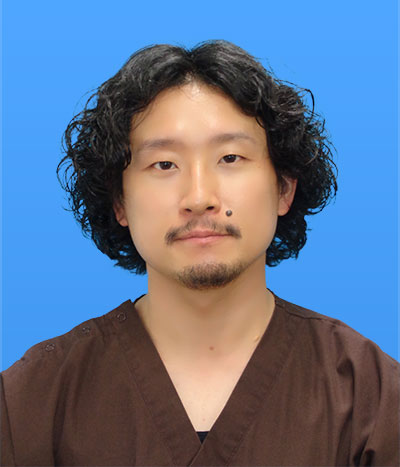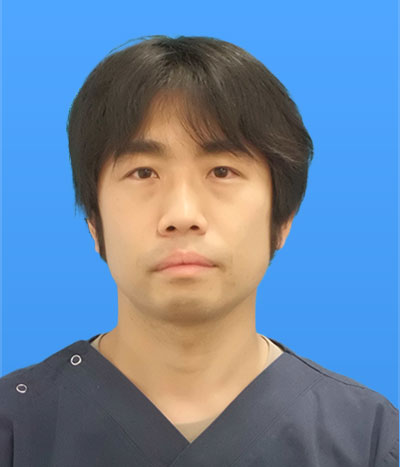![]()
Department of Vascular Surgery
April 14,2025 Update
Introduction
In the Department of Vascular Surgery, we examine and treat diseases of blood vessels throughout the whole body. Although we primarily provide surgical treatments, we also offer pharmacotherapy. In Japan, cardiovascular surgery departments have been in existence for many years and tend to focus on treating the heart. In contrast, the vascular surgery department specializes in treating a wide range of vascular diseases. Although vascular diseases are commonly treated in vascular surgery departments in Western countries, there are still very few vascular surgery departments in Japan (specifically, Tokyo University, Nagoya University, Asahikawa Medical University, and Jikei University Hospital). Blood vessels are broadly divisible into arteries and veins, and diseases of the arteries are roughly divided into dilation types (aneurysm) and clogging types. Treatments for both diseases have advanced significantly in recent years.
Since aortic aneurysms can lead to death when left untreated, surgeries for this condition had been considered a major procedure. Today, however, this is not the case; researchers have developed methods to treat aneurysms by inserting an artificial blood vessel called a stent graft into the artery from a small incision made at the groin, greatly reducing the physical burden on the patient. While we may not be able to offer this treatment to all patients, we endeavor to propose an approach tailored to each patient.
The number of patients with arteriosclerosis has been increasing recently. This is primarily due to the aging population, but the increase in diabetes that promotes arteriosclerosis is also a significant factor. The vascular lesions of patients with diabetes occur in thin blood vessels and tend to become aggravated, making treatment a challenge. However, we are proud to say that we lead Japan in this field.
The most common disease of the veins is varicose veins, a condition in which the blood vessels of the legs swell up into lumps. Endovascular treatments (laser treatment or radiofrequency ablation) are also performed for this condition. We utilize radiowaves (electromagnetic waves), as we believe this type of treatment is superior. Since indications differ depending on the individual patient, we provide thorough explanations according to individual circumstances.
Patient care at our department
We treat a wide range of vascular diseases, as described below, and provide the optimal treatments primarily involving surgery.
- Aneurysms
- A common site for aneurysms is the abdominal aorta, and this condition lacks
symptoms such as pain, other than a feeling of pulsation around the navel.
Aneurysms can be found relatively easily on ultrasound or computed tomography,
but the major concern is that they may suddenly rupture one day. Albert Einstein
and Ryotaro Shiba both died of this disease. Surviving rupture of an aneurysm is
difficult, and arrival at the hospital is often too late.
The larger the aneurysm, the greater the likelihood of rupture. In small aneurysms, only regular testing may be provided without surgery. Patients who have concerns should first consult with their primary-care doctor.
We also offer stent-grafting for endovascular aneurysm repair using a catheter in older patients or patients with decreased heart or lung functions (high-risk patients), combining this with traditional laparotomy surgery to provide individualized treatment for each patient. - Chronic artery occlusion
- This is a disease in which the artery gradually becomes clogged due to arteriosclerosis. The presence of diabetes and a history of smoking both progress this condition, which often develops in the arteries of the legs. Pain develops in the buttocks or calves when walking, but goes away with rest, so many patients do not seek medical attention. However, with disease progression, leg pain may remain despite rest, and ulcers and gangrene can also appear in the legs. Recently, many patients have suddenly been developing ulcers on the legs without pain when walking. When symptoms do not improve with medication or smoking cessation, bypass surgery or endovascular catheter surgery is performed to improve blood flow.
- Varicose veins of the lower extremities
- This is a very common condition in which the veins of the legs become swollen in an irregular pattern. Treatment is not always necessary, but is recommended when symptoms such as heaviness and pain in the legs are present. Some patients develop ulcers around the ankles that may not heal easily. In this situation, surgical treatment becomes necessary. Itching or brown discoloration around the ankle are often warning signs for these ulcers, and attention is therefore necessary. We use compression treatment with elastic stockings, remove the problematic veins (stripping), and perform catheter cauterization (endovascular ablation) with a short hospital stay.
Main diseases
- Abdominal aortic aneurysm
- Acute artery occlusion
- Varicose veins of the lower extremities
- Thoracic aortic aneurysm (stent graft treatment)
- Buerger's disease
- Dialysis shunt failure
- Lower limb obstructive arteriosclerosis
- Aortoiliac occlusive disease
- Visceral aneurysm
- Deep vein thrombosis
Target Symptoms
- Aortic aneurysm: often asymptomatic.
- Lower limb obstructive arteriosclerosis: intermittent claudication (pain in the calves or thighs when walking that goes away when resting), ulcer/gangrene on the leg.
- Aortoiliac occlusive disease: intermittent claudication, sexual dysfunction.
- Acute artery occlusion: sudden cold feeling, pain, and pallor of the limbs.
- Varicose veins of lower extremities: heaviness, muscle spasm, pain, and itchiness of the leg.
- Deep vein thrombosis: sudden swelling and pain in one leg.
Treatment results
| Disease name | Number of surgical cases | Non Number of surgical cases | Total |
|---|---|---|---|
| Abdominal aortic aneurysm | 82 | 37 | 119 |
| Thoracic aortic aneurysm stent graft | 5 | 5 | 10 |
| Obstructive arteriosclerosis (including aortoiliac occlusive disease) | 85 | 52 | 137 |
| Varicose veins of the lower extremities | 53 | 0 | 53 |
| Dialysis shunt failure | 26 | 1 | 27 |
| Others | 20 | 29 | 49 |
| Total | 271 | 124 | 395 |
Medical staff
| Name | Job Title | Position | Specialized Field | Credentials |
|---|---|---|---|---|
| 出口 順夫 (Deguchi Juno)  |
Professor | Surgeon in Chief | Vascular Surgery | Board Certified Surgeon Board Certified Cardiovascular surgeon Board Certified Instructor of Cardiovascular Surgery Board Certified fellow of the Japanese Collage of Angiology:vascular specialist Certified Stentgraft Instructor |
| 橋本 拓弥 (Hashimoto Takuya)  |
Associate Professor | Chief of Ward Chief of OPD |
Vascular Surgery | Board Certified Surgeon Board Certified Cardiovascular surgeon Board Certified Instructor of Cardiovascular Surgery Board Certified fellow of the Japanese Collage of Angiology: vascular specialist Certified Stentgraft Instructor |
| 遠藤 貴士 (Endo Takashi)  |
Instructor | Vascular Surgery | Board Certified Surgeon Board Cerfified fellow of the Japanese Collage of Angiology: vascular speciaist Board Certified Endovascular Fellow of the JSVS |
|
| 松原 和英 (Matsubara Kazuyoshi)  |
Instructor | Vascular Surgery | Board Certified Surgeon Board Certified fellow of the Japanese Collage of Angiology: vascular specialist |
|
| 松本 理奈 (Matsumoto Rina)  |
Instructor | Vascular Surgery | Board Certified Surgeon | |
| 佐藤 紀 (Sato Osamu)  |
Visiting Professor | Vascular Surgery | Board Certified Surgeon Board Certified Cardiovascular surgeon Board Certified fellow of the Japanese Collage of Angiology: vascular specialist |
|
| 山本 諭 (Yamamoto Satoshi)  |
Instructor (part-time) | Vascular Surgery | Board Certified Surgeon Board Certified Cardiovascular surgeon Board Certified fellow of the Japanese Collage of Angiology: vascular specialist Certified Stentgraft Instructor |
|
| 瀬尾 明彦 (Seo Akihiko)  |
Instructor (part-time) | Vascular Surgery | Board Certified Surgeon Board Certified fellow of the Japanese Collage of Angiology: vascular specialist Certified Stentgraft Instructor Board Certified Endovascular Fellow of the JSVS |
|
| 佐野 允哉 (Sano Masaya)  |
Instructor (part-time) | Vascular Surgery | Board Certified Surgeon Board Certified fellow of the Japanese Collage of Angiology: vascular specialist Certified Stentgraft Instructor Board Certified Endovascular Fellow of the JSVS |
Outpatient clinic
| Department of Vascular Surgery | ||||||
| Monday | Tuesday | Wednesday | Thursday | Friday | Saturday | |
| 午前 | ||||||
| 初診 ・ 再診 |
出口 順夫 (Deguchi Juno) |
橋本 拓弥 (Hashimoto Takuya) |
松原 和英 (Matsubara Kazuyoshi) (2.4週) |
橋本 拓弥 (Hashimoto Takuya) |
||
| 松本 理奈 (Matsumoto Rina) (1.3週) |
||||||
| 初診 |
佐藤 紀 (Sato Osamu) |
(交替制) |
||||
| 午後 | ||||||
| 再診 |
出口 順夫 (Deguchi Juno) |
松原 和英 (Matsubara Kazuyoshi) |
松原 和英 (Matsubara Kazuyoshi) (2.4週) |
|||
| 遠藤 貴士 (Endo Takashi) |
松本 理奈 (Matsumoto Rina) (1.3週) |
|||||
紹介状を持って受診して下さい。
To the Medical Institutions
The Department of Vascular Surgery of Saitama Medical Center specializes in the treatment of peripheral blood vessels. With a team of five surgeons and two clinical laboratory technicians, we diagnose and examine diseases of the aorta, peripheral arteries, veins, and lymphatic system, in addition to performing surgical procedures to treat these conditions. We select the optimal procedure, with consideration of both traditional open surgeries and cutting-edge endovascular treatments. These methods are sometimes combined (hybrid treatment) to provide a flexible yet ideal treatment for each patient.
We perform stent grafting for aortic aneurysms with one thoracic and two abdominal qualified specialists, with a particular focus on postoperative follow-up, as the most crucial step in endovascular treatments.
Many patients with arterial occlusive disease are also referred to us. For the treatment of critical limb ischemia, we collaborate with a foot-care team (consisting of special nurses and experts from the departments of plastic surgery, dermatology, diabetes and endocrinology, and vascular surgery) from the preoperative stage to provide multidisciplinary medical care, helping patients to achieve the optimal postoperative return to daily life.
We also are involved in clinical research and are participating in the following Japanese and international multicenter studies.
- Wound-directed angiosome revascularization approach to patients with critical limb ischemia - a prospective multicenter observational study (WARRIORS study)
- Japanese registry of patients treated with endovascular or open repair for ruptured abdominal aortic aneurysm (multicenter observational study)
- Japanese registry of rivaroxaban effectiveness & safety for the prevention of recurrence in patients with deep vein thrombosis and pulmonary embolism
- Efficacy and safety of rivaroxaban in reducing the risk of major thrombotic vascular events in subjects with symptomatic peripheral artery disease undergoing peripheral revascularization procedures of the lower extremities- an international, multicenter, randomized, double-blind, placebo-controlled phase III trial (VOYAGER PAD)




